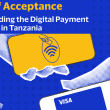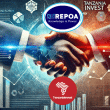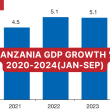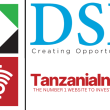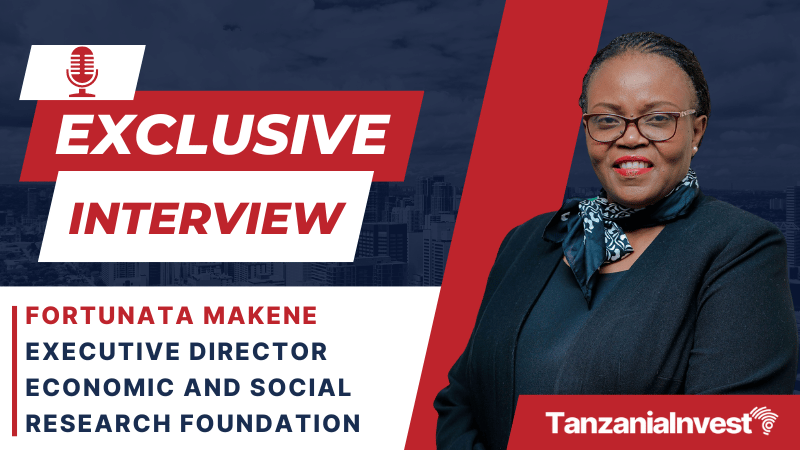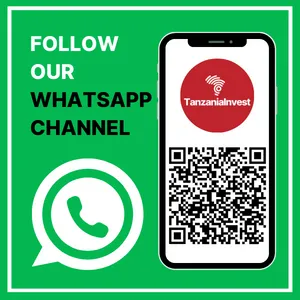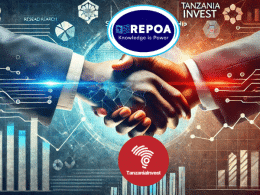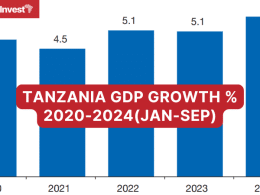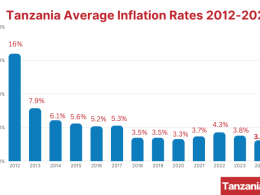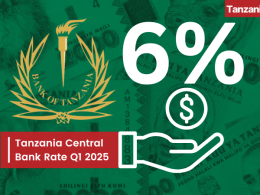In this exclusive interview with TanzaniaInvest, Prof. Fortunata Songora Makene, Executive Director of Tanzania’s Economic and Social Research Foundation (ESRF) delves into the institution’s pivotal role in shaping Tanzania’s socio-economic policies.
Prof. Makene provides a comprehensive overview of ESRF’s mission, aligning its research agenda with national development priorities and highlighting impactful projects that have influenced policy-making.
She discusses the foundation’s collaborative efforts with government agencies, international organizations, and the private sector, as well as its strategic priorities for the next five years.
Investors and business professionals will gain valuable insights into Tanzania’s economic and social development opportunities and trends, underscoring ESRF’s commitment to fostering inclusive and sustainable growth.
Background and Role at ESRF
Can you provide a brief overview of the primary objectives and mission of ESRF?
The Economic and Social Research Foundation (ESRF) is an independent policy research institution based in Dar es Salaam, established in 1994 and tasked with conducting research for policy analysis and capacity building of actors in development management.
The Foundation’s primary objectives are to undertake policy-enhancing research, strengthen capabilities in policy analysis and evidence-based decision-making, as well as articulate and improve the understanding of policy options in the government, the public sector, the donor community, the growing private sector, and the civil society.
We produce research, offer policy advice, and convene key stakeholders to ensure Tanzania is better positioned for smart, inclusive, and sustainable development, by advancing knowledge to serve the public, the government, CSOs, and the private sector through policy-oriented research, capacity development initiatives and advocating for good development management practices.
How does ESRF align its research agenda with Tanzania’s national development priorities?
ESRF research agenda, reflected in its Medium Term Strategic Plans (MTSPs), aligns with Tanzania’s development priorities, current capacity needs, emerging national, regional, and global policy issues, and the national development frameworks (Tanzania Development Vision 2025; National Five Year Development Plans, etc).
These core research themes are derived through a consultative process involving national key stakeholders and are reviewed every 5 years to ensure that they remain relevant.
Currently, the core themes for the MTSP for 2022-2026 are:
- Inclusive Growth, Employment, and Industrialization
- Globalization, Regional Integration, Trade, Investment and Business Facilitation
- Good Governance and Accountability
- Gender, Social Provision, and Social Protection
- Natural Resource and Environmental Management
- Enhancing Digital Economy, Knowledge Management, and Innovation
ESRF Research and Impact
Can you highlight some of the most impactful research projects undertaken by ESRF in recent years?
The Foundation has made significant contributions to the development process, including actively supporting national and sectoral strategic medium and long-term planning initiatives such as the Tanzania Development Vision (TDV) 2025, the formulation of its implementation tool, the and Long-Term Perspective Plan. The ESRF was also substantially involved in various stages of preparing the Poverty Reduction Strategy Paper (PRSP) and the National Strategy for Growth and Reduction of Poverty (NSGRP-MKUKUTA and MKUZA). Carrying out such important engagements has positioned the Foundation at the center of policymaking in Tanzania and reinforced its influence and relevance.
Most recently, the Foundation has been tasked with the review of the implementation of FYDP II (2016/17-2020/21) and making practical recommendations that fed into the drafting of the successor FYDP III (2021/22-2025/26). Similarly, the Foundation was commissioned to evaluate the implementation of TDV 2025 and provided recommendations for the formulation of TDV 2050.
ESRF was also engaged in the Rapid Response Implementation Support (RARIS) project for the Ministry of Agriculture (MoA) and other Agricultural Sector Lead Ministries (ASLMs) to ensure effective and efficient delivery of the Agricultural Sector Development Programme (ASDP II). Other flagship projects with significant impacts include:
- Development of Regional Investment Guides for all regions in Tanzania portraying regions’ competitiveness in areas of comparative strengths as well as emerging economic areas thereby facilitating investment decisions.
- Establishment of Impact Evaluation Laboratory which is delivering training on impact evaluation methodologies for the public and private sector.
- Formulation of National Anti-Corruption Strategy and Action Plan Phase IV (NACSAP IV): 2023-2030, identifying corruption-prone areas and proposing practical strategies for addressing the challenge.
- The Development of the Textile Subsector Development Strategy 2022-2032: aiming at promoting the growth of the textile and clothing value chain stages thereby contributing to the manufacturing and export-led socioeconomic development.
- Formulation of the National Export Strategy 2024-2034, aiming at enhancing the export capacity of Tanzania products, expanding its potential competitive channels for the exportation of goods and services through expansion and diversification of both markets and products as well as enhancing cross–border trade.
How does ESRF ensure that its research findings influence policy-making and implementation in Tanzania?
The Foundation’s research findings reach a wide range of our stakeholders; policymakers, academia, the private sector, development partners, civil society, and the general public. For example, in the course of assisting society in utilizing opportunities available in every region across the country in various sectors, the Foundation organized a workshop on investment and business ideas aiming at sharing information and knowledge on opportunities found in regional investment guides-new technology, access to financial, markets and agribusiness.
The Foundation is using several communication channels to ensure that the research findings reach the target audiences. These include:
TzOnline Gateway (www.tzonline.org): This is an online library where many analytical documents are posted (researched papers, journal articles, etc.) on development issues in Tanzania and disseminated to our broad range of stakeholders.
Knowledge TV (www.knowledgetv.esrf.or.tz): The channel translated research outputs into simpler form and disseminated them. The Platform has more than 40 programs to inform and educate our stakeholders and the general public. Some Community radios used the programs to inform their listeners in their areas of coverage
E-Brief: The platform provides various information on the ongoing activities at the Foundation.
Social Media (Twitter, WhatsApp, Facebook): These are used to share, promote, and disseminate the Foundation’s products and services. By June 2024, ESRF had 5,600 Facebook registered followers while Twitter registered 10,800.
Media coverage: the Foundation works closely with different media houses to disseminate research findings and other products and services to reach our broad audiences. Foundation’s events are featured on Television and radio channels, and newspapers.
ESRF Publications: ESRF publishes materials (Policy briefs, Working Papers, Annual Reports, Newsletters, etc.) to inform, share, and educate our stakeholders on research finding
Opportunities and Partnerships
In your opinion, what are the biggest opportunities for economic and social development in Tanzania in the coming years?
In Tanzania, several key opportunities for economic and social development are evident. Important ones include:
Climate Resilience and Sustainable Development: Addressing climate change challenges through adaptation and mitigation strategies can safeguard natural resources, mitigate risks, and foster sustainable development.
Digital Economy: Embracing digital technologies and improving internet connectivity can spur innovation, entrepreneurship, and efficiency across various sectors, contributing to economic growth and social inclusion.
Infrastructure Development: Investing in infrastructure such as roads, ports, and energy facilities can significantly boost economic growth by reducing logistical costs, improving connectivity, and attracting investments.
Natural Resource Management: Sustainable utilization of Tanzania’s abundant natural resources, including minerals, agriculture, and tourism, presents opportunities for growth and job creation while preserving environmental integrity.
Agricultural Transformation: Agriculture is the mainstay of Tanzania’s majority population. Modernizing agriculture through improved techniques, access to markets, and value addition can enhance food security, create employment, increase rural incomes, and stimulate economic diversification.
Blue economy: The blue economy represents a significant opportunity for Tanzania’s economic and social development, particularly due to its extensive coastline along the Indian Ocean and rich marine resources. Fisheries and Aquaculture, Tourism and Recreation, and similar activities are opportunities for further development for the economic prosperity of the country.
Private Sector Engagement: Encouraging private sector participation through supportive policies, access to finance, and infrastructure development can drive innovation, create jobs, and diversify the economy.
How does ESRF collaborate with government agencies, international organizations, investors, and other stakeholders?
ESRF has forged collaborations with several government agencies, international organizations, the private sector, and other stakeholders. Some of these partnerships include Government Ministries, Departments, and Agencies (MDAs) like the Ministry of Agriculture (MoA), the Ministry of Finance (MoF), the President’s Office-Planning Commission (PO-PC), the Ministry of Natural Resources and Tourism, the National Development Cooperation (NDC), among others.
International partnerships include Universities like the London School of Economics, the Norwegian School of Economics, UNICEF, The University of Manchester, the University of California – Berkeley, the University of Leeds, Open University UK, and Columbia University; and other organizations like the Food, Agriculture and Natural Resources Policy Analysis Network (FANRPAN), the Bill & Melinda Gates Foundation, the Southern African Institute of International Affairs (SAIIA), the International Development Research Centre (IDRC), the Center for Effective Global Action (CEGA), the William & Flora Hewlett Foundation, the Network of Impact Evaluation Researchers in Africa (NIERA), the World Bank, Embassies such as Sweden, Norway, Finland, and Denmark, the Partnership for Economic Policy (PEP) and the Social Science Research Council (SSRC).
These collaborations have been developed through:
- Working closely with government ministries, departments, and agencies to conduct research, provide policy advice, and support capacity-building initiatives,
- Implementing joint research projects, policy dialogues, and capacity-building activities with international organizations and universities aimed at addressing developmental challenges in Tanzania and aligning with global development agendas.
- Engaging with investors and the private sector through research and policy advocacy efforts aimed at promoting investment, economic growth, and job creation by providing credible data and analysis, and
- Collaborating with media outlets to disseminate research findings and policy recommendations to a wider audience, including policymakers, practitioners, and the general public.
Capacity Building and Training
What initiatives does ESRF undertake to build capacity and enhance skills among researchers and policymakers in Tanzania?
The Foundation recognizes the importance of a skilled workforce in driving development. ESRF has a dedicated department that focuses on strengthening the research and policy analysis capabilities of Tanzanians. The capacity-building initiatives encompass:
Short-Term Training Courses: ESRF offers targeted training programs on various topics relevant to research and policymaking. Some topics include: Research Methods; Data Analysis; Knowledge Management;
Impact Evaluation Laboratory: The lab builds the capacity of researchers to conduct scientific impact evaluation research. It offers training aimed at establishing a strong community of practice in Tanzania and expanding the impact evaluation space in Tanzania through the capacity-building of local researchers in IE methods.
Collaboration with Partners: The Foundation has collaborated and still collaborates with universities and other institutions to offer training programs and workshops. This leverages expertise and provides a wider range of learning opportunities for researchers and policymakers. Workshops include inception, validation, dissemination, and/or policy dialogue workshops.
Future Directions & Economic and Social Trends
What are ESRF’s strategic priorities for the next five years?
Within our mandate, we focus on priorities that will enable ESRF to remain relevant, impactful, and sustainable over the next five years and beyond.
In the next five years, we aim to address pressing issues, generating high-quality evidence, influencing policy and practice, and fostering collaboration, to contribute significantly to socio-economic development and policy innovation.
Our strategic priority will involve first and foremost addressing emerging economic and social challenges related to economic growth and sustainable development to address drivers of economic growth and strategies for sustainable development; and the impact of climate change on sustainable development. This will include focusing on renewable energy, resource management, and climate resilience.
Also, addressing social inclusion to investigate the root causes of economic and social inequalities and address gender equality, access to education, and social protection.
We also need to be part of the Fourth Industrial Revolution by embracing Artificial Intelligence and inclusive digitalization as well as working on governance and Accountability Post-SDGs Agenda
Secondly, promote evidence-based policy making by strengthening data collection and analysis using innovative methodology, solidifying our skills, and becoming a think tank that everyone who comes to Tanzania wants to work within RCTs, technology for data collection, and big data. We will also continue dissemination effectively to our varied stakeholders by engaging them using policy briefs, infographics, and social media to communicate research findings effectively and provide actionable recommendations.
Third, enhancing capacity for policy research and analysis through collaboration and promoting knowledge sharing and public engagement: in the next five years we hope to invest in training and professional development for researchers to build expertise in cutting-edge methodologies and conduct international and interdisciplinary research. We will also continue to foster partnerships with local, regional, and international research institutions, universities, and think tanks by engaging in collaborative research projects and knowledge-sharing initiatives.
Fourth, staying in the game of institutional sustainability is critical. We will continue to pursue diverse funding not only from grants but also from private sector partnerships. I understand that building an endowment fund has been difficult for many Tanzanian and African think tanks, but we are willing to try. A reserve will allow us to prioritize high-impact research areas and strategic initiatives.
Finally, we aim to strengthen monitoring and evaluation frameworks to assess our impact, on policy and practice in Tanzania and beyond.
What are some current economic and social trends in Tanzania that ESRF is focusing on?
Some of the key areas are:
Economic Growth, Business and Trade Facilitation: ESRF is engaged in research and analysis to support private sector development, including assessing the impact of government reforms and tracking implementation of the Blueprint for Regulatory Reforms to Improve the Business Environment, Tanzania Development Vision and other sectorial plans, strategies, etc. ESRF is also interested in exploring how to leverage the demographic dividend for economic growth.
Sustainable Development: ESRF is involved in research on sustainable economic and social development, including climate change and natural resource management, such as Blue Economic Growth.
Social Inclusion: ESRF is interested in research that promotes the inclusion of women, youth, and other marginalized groups. ESRF envisions a role in the discourse in reducing the gap between national development plans and the understanding of these plans at the local level.
Digital Economy: ESRF recognizes the importance of the digital economy and wants to conduct research to help Tanzania position itself to take advantage of this trend.
Conclusion
Is there any additional message or insight you would like to share about ESRF’s work and its impact on Tanzania’s development?
The Foundation has done significant work from its inception to support the policy-making process in Tanzania for 30 years. The Foundation work has culminated in the government of Tanzania being able to take stock of the implementation of plans in a scientific manner and plan accordingly. The Foundation has also contributed significantly to building capacities of policy analysis and research mainly in the public sector to enable them to make more informed decisions. We invite partners who wish to collaborate with us.
How can individuals and organizations interested in ESRF’s work get involved or support your initiatives?
Interested individuals and/or organizations can support the Foundation in a number of ways, such as via research and publication collaboration, capacity building of staff through short-term and/or long-term programs, and collaboration in knowledge management and dissemination as ESRF welcomes the opportunity to share findings within and outside of the country.

